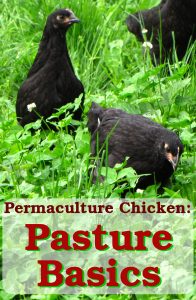Before livestock entered my life, I never paid attention to the first green grass. But now, even when we don’t have our own chickens or goats, those tender sprouts in late February make me smile. Sure enough, a visit to our neighbor’s house revealed her flock hungrily pecking up not just worms but also every bit of greenery they could get their beaks on.
Luckily for all of us, chickens aren’t like ruminants — they won’t eat so much spring grass that they make themselves sick. But they can easily overgraze the first flush so much that their pasture becomes spotty and rank for the rest of the year.
In a free-range setting like this one, there’s not much you can do to prevent overgrazing. And our neighbor doesn’t really need to — after all, her chickens are able to roam across several acres, so once one area runs out they’ll move on to another. But if you’ve got your flock more constrained in either tractors or a pasture, spring is the time to be plotting out your entire year’s rotation schedule so you still have green grass for the birds to enjoy in July and August.
$2.99
(epub file sideloaded through Bookfunnel)
I’ve plotted out years’ worth of pasturing wisdom in my ebook Pasture Basics, currently on sale for 25% off if you buy direct. Hopefully my tips will let your flock enjoy the spring flush…and the summer lull as well. Happy grazing!



